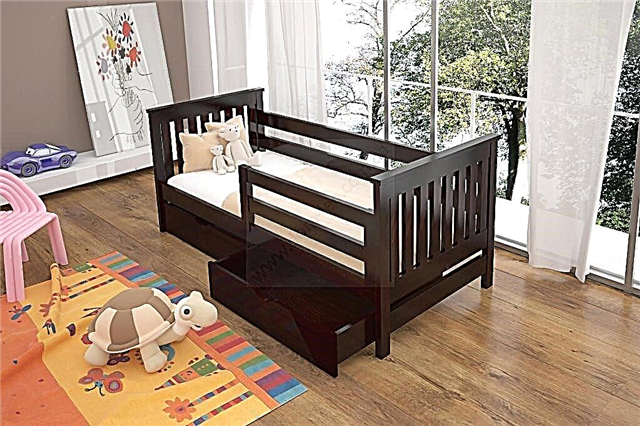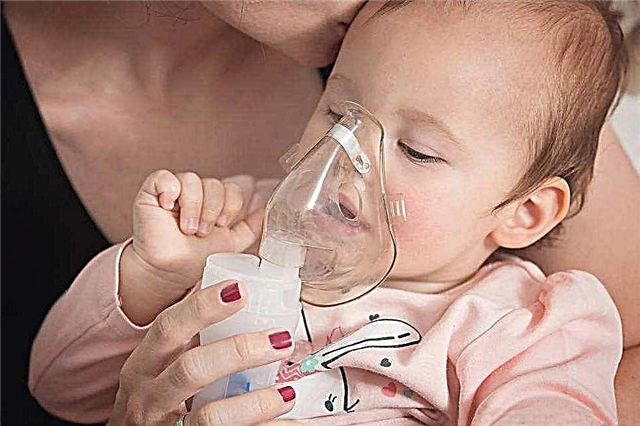
Flat feet in adolescents are diagnosed more often than in children of other ages. Babies are not given such a medical verdict at all, since up to 4-5 years old, the feet of all children are physiologically flat.
In preschool age and primary school, flat feet are usually detected by accident, but in adolescents who begin to undergo medical commissions at school, the pathology can no longer be hidden. If this happens, then the question of treatment arises. In this article, we will tell you what methods can be used to get rid of foot deformities in adolescence.


Types and degrees of disease
Deformities of the arches of the feet in adolescence can occur in two types - longitudinal or transverse. Sometimes there is a mixed combined flat feet.
With longitudinal flattening of the foot, the entire length of the foot occurs, the child's legs throughout the area are in contact with the floor surface. When transverse, the feet become wider due to the flattening of the metatarsal zone.

The type of disease plays an important role in prescribing treatment. With the transverse, some therapeutic measures are effective, with the longitudinal, others. In addition, the orthopedic surgeon determines the extent of the disorder:
- Grade 1 transverse flat feet is characterized by an angle of 10-12 degrees between the metatarsal bones No. 1 and 2, as well as the angle of deviation of the thumb 15-20 degrees from the normal position.
- Grade 2 transverse deformity is an angle between the metatarsal bones of 15 degrees, the thumb is deflected from its natural position by 30 degrees.
- Grade 3 transverse flat feet is accompanied by an angle between metatarsal bones No. 1 and 2 of 20 degrees, while the first toe is protruded by 40 degrees.
- 4 degree of transverse pathology - these are values that exceed those specified for the third degree.

Longitudinal deformation of the foot is measured by the height of the arch:
- 1 degree - arch (distance from the floor to the top point of the arch, which is the most distant from the floor) in 25-35 mm.
- 2nd degree - arch from 25 to 17 mm.
- 3 degree - arch less than 17 mm.


Causes
The reasons why a teenager can develop a flat foot are extensive and varied.
Most often in children over 10-11 years old, static flat feet associated with with external influence on the leg... This can be wearing uncomfortable and wrong shoes, excess weight, and, as a result, increased stress on the legs.


In adolescence, traumatic flat feet are often found, resulting from improper bone fusion after injury - fractures and ruptures of the ligaments and muscles of the ankle, calcaneus and other bones of the foot.
Paralytic flat feet can be a sign of previous polio, other diseases, including lesions of the nervous system, which led to partial paralysis and paresis of certain muscles involved in the formation of the feet.
Congenital flat feet is not often detected in adolescence, since it is possible to examine it much earlier, but if the orthopedist for some reason has not been visited, then the diagnosis of "flat feet of the congenital type" can be heard for the first time only when the child enters puberty.


Adolescents who are professionally involved in sports involving heavy lifting, excessive physical exertion are more likely to suffer from flat feet than their peers who do not experience such loads.
Usually the prerequisites for the development of flat feet arise long before adolescence. Therefore, in adolescents, the initial stages of leg deformity are rarely found, usually these are already quite serious anomalies, the treatment of which should not be delayed, since there is little time - conservative measures are good only when the foot is still growing intensively.

Symptoms and signs
A teenager with flat feet gets tired faster when walking, his legs often hurt, especially in the evening. Swelling of the ankles may appear, with sufficiently pronounced flat feet, gait is disturbed, clumsiness appears.
Such a child always tramples shoes on the inside. Frequent attacks of headaches, complaints about the fact that the legs are "cramped", pain in the knees are not excluded.
With a pronounced anomaly in the development of the feet (from grade 3 and above), deformities become visible and distinguishable visually. It becomes more and more difficult to choose comfortable shoes, long walking becomes more and more painful. Arthrosis may begin to develop.
For teenage girls with flat feet, it is painful to wear shoes with heels, because the legs get tired very quickly, and there is a shooting pain.


Treatment
The peculiarities of the treatment of flat feet in adolescence lie in the fact that there is not much time for correction - soon the feet will stop growing, and conservative treatment may not bring the desired result.
Therapy is associated not only with the correction of the feet, but also with the reduction of the load on the spine. With insufficient cushioning, adolescents walk with a slight forward bend of the body, as a result of which the spine suffers more severelyabout than in younger children.
Due to the fact that the weight of adolescents is higher than the weight of children of primary school age, with flat feet in boys and girls, the load on the knee and hip joints is stronger, respectively, the likelihood of their deformation and injury is higher.

All these age factors must be taken into account by the doctor before prescribing one or another method of treatment.
In most cases, adolescents under 13-14 years old are prescribed conservative treatment, or rather a set of measures that, when mutually influenced, provide a sufficiently effective result.
Conservative treatment
For boys and girls with an insignificant stage of foot deformity, physiotherapy exercises and massage are prescribed.
It is considered very effective a visit to a chiropractor. Manual therapy sessions reduce the load on the spinal column, and massage the ankle and foot muscles helps to strengthen them.

Parents can master massage on their own. This is a classic therapeutic massage, which is best started with the feet, with special attention fingers and arch of the foot.
Stroking should be replaced by kneading, then intense deep kneading and vibrational touching technique. Following the foot, the lower leg is massaged in a similar way, especially deeply - its inner side, thighs and buttocks, as well as the lower back. Massage should be carried out in courses of 14 days with breaks of 10 days.

Physiotherapy offers more than 25 types of different exercises to strengthen the muscles of the feet in particular and all the muscles of the lower extremities in general. The most common techniques are available for homework.

You can correct minor deformation systematic gymnastics, which includes walking on tiptoe and on heels, rolling from toes to heels, walking with support on the outer part of the foot, on its inner part. For charging, you can use a special foot massage mat.
Orthopedic salons offer a large selection of such mats - applicators. Before purchasing, you should definitely consult with the orthopedist who is observing the patient. He will give all the recommendations on the size, degree of rigidity of the product, its relief.
Needle applicators are suitable for some teenagers, textured applicators for others (“stones”, “pebbles”, “thorns”). A young man or girl will have to practice on the rug every day, the first positive results will not be noticeable from the first days. Complex treatment - using a rug, gymnastics and massage gives a more beneficial effect.
Useful additionally and physiotherapy procedures - electrophoresis, including with the use of drugs (SMT method), magnetic therapy, UHF.
Recently, a new treatment method has been gaining momentum - taping. At the same time, special holding tapes are glued to the foot, which redistribute the load in various muscles. With these ribbons, the teenager goes to school, does gymnastics and exercises, leads a very ordinary life. The tapes are changed every few days.


One of the most important points of conservative therapy is wearing orthopedic shoes. The need for it may arise at 2-3 degrees of pathology.
Shoes with a rigid supporting back and special instep supports are purchased in an orthopedic salon as prescribed by a doctor. A pair of shoes will be made for the child, taking into account the individual characteristics of the foot, the angle of rotation, the angle of deviation from the norm, the height of the arch, and so on.
Orthopedic shoes are quite heavy to wear and expensive. Adolescents with a mild stage can get by with the purchase of orthopedic insoles that are put into ordinary shoes.

Medicines
Medical treatment of flat feet is recommended for 2-3 degrees of pathology. It is essentially symptomatic, aimed at eliminating unpleasant sensations. It is not independent and is used only in combination with the conservative methods described above.
To relieve pain, use "Ibuprofen" in tablets, "Indomethacin ointment", "Nurofen" and "Ortofen". To reduce swelling of fingers and ankles, use Troxevasin ointment. With paralytic muscle lesions and a tendency to seizures, muscle relaxants are recommended.


Operative treatment
Surgical intervention is recommended for a teenager when conservative treatment has not brought the desired result, as well as with 3-4 degrees of pathology, bypassing conservative therapy. Experienced surgeons and existing techniques can cure flat feet.
Transverse flat feet, in which a protruding "painful bone" is often formed, is operated by removing the overgrown bone, and sometimes 2-3 metatarsal bones. In the future, the teenager wears special orthopedic sandals for several months, which allow the foot to heal properly.

There are more methods of surgical intervention for longitudinal flat feet. This is both tendon plastic and muscle plastic. The most popular is the Evans operation, in which the heel bone is lengthened due to the implantation of part of its own bone tissue into it, which reduces the risk of rejection.
Surgeons often insert a titanium implant into the subtalar sinus of the foot. The implant rigidly fixes the arch. After some time, usually before reaching the age of 18, the implant is removed, and the arch continues to maintain the correct position.
After surgery, the teenager is shown physiotherapy, and after a few months - massage, gymnastics, sports, and sometimes wearing orthopedic shoes.

Consequences and forecasts
Flat feet are curable. The prognosis is quite favorable if the parents take treatment seriously:
- In more than 75% of cases, problems can be corrected with conservative treatment.
- 97% of surgical operations are completed without complications and with the desired results, since surgeons use low-traumatic methods and make small incisions.
Teenage flat feet in the absence of the necessary treatment often leads to disability. The disease is dangerous primarily because its complications are pathological changes in the spine, in the pelvic region, in the knee area.
The consequences of such changes are arthrosis, severe fractures, and impaired posture and gait, and spinal hernias, displacement of the vertebral discs, pinching of the spinal nerves, paralysis, and dysfunction of the nervous system.


The most unfavorable from the point of view of the possibility of developing a disabled state is the third degree of pathology. With it, the shock-absorbing properties of the foot are almost completely lost, and the joints, which take on an unbearable load, are rapidly destroyed.
By itself flat feet in adolescents does not go away, it is not considered physiological, as in young children, and therefore the lack of treatment makes the doctors' predictions unfavorable - the deformation will progress, other parts of the musculoskeletal system will also be involved in it.

For more information on flat feet and its treatment, see the next video.



